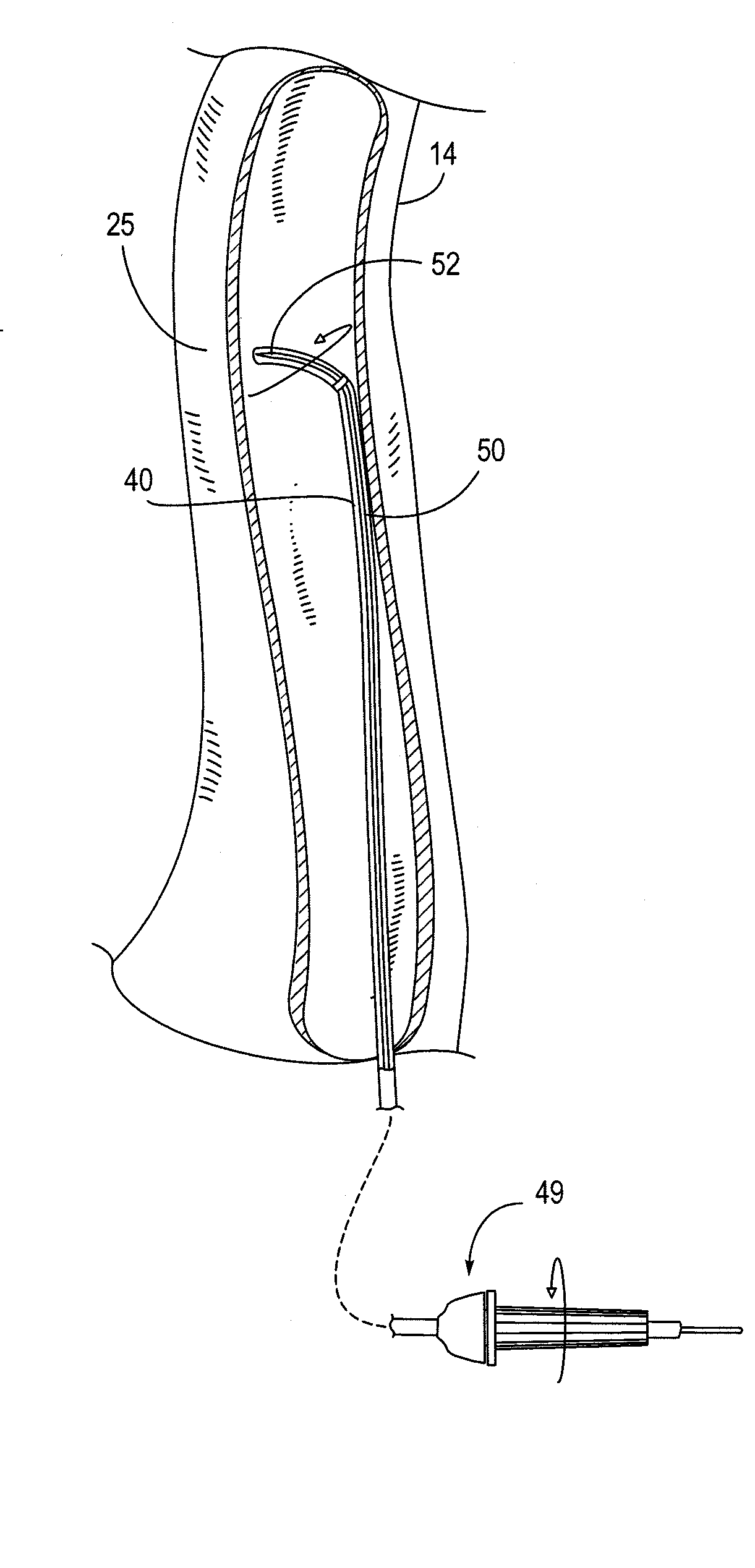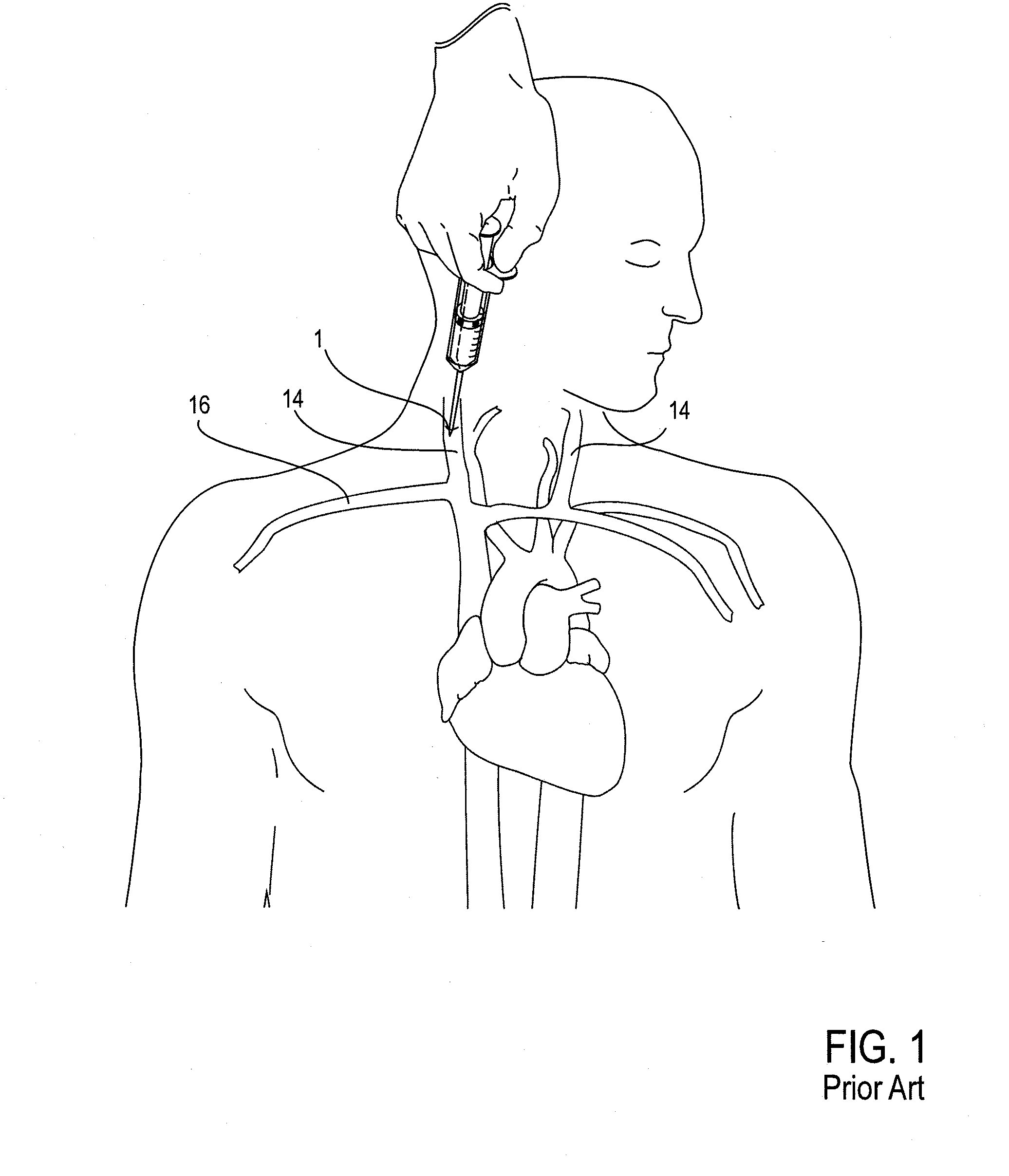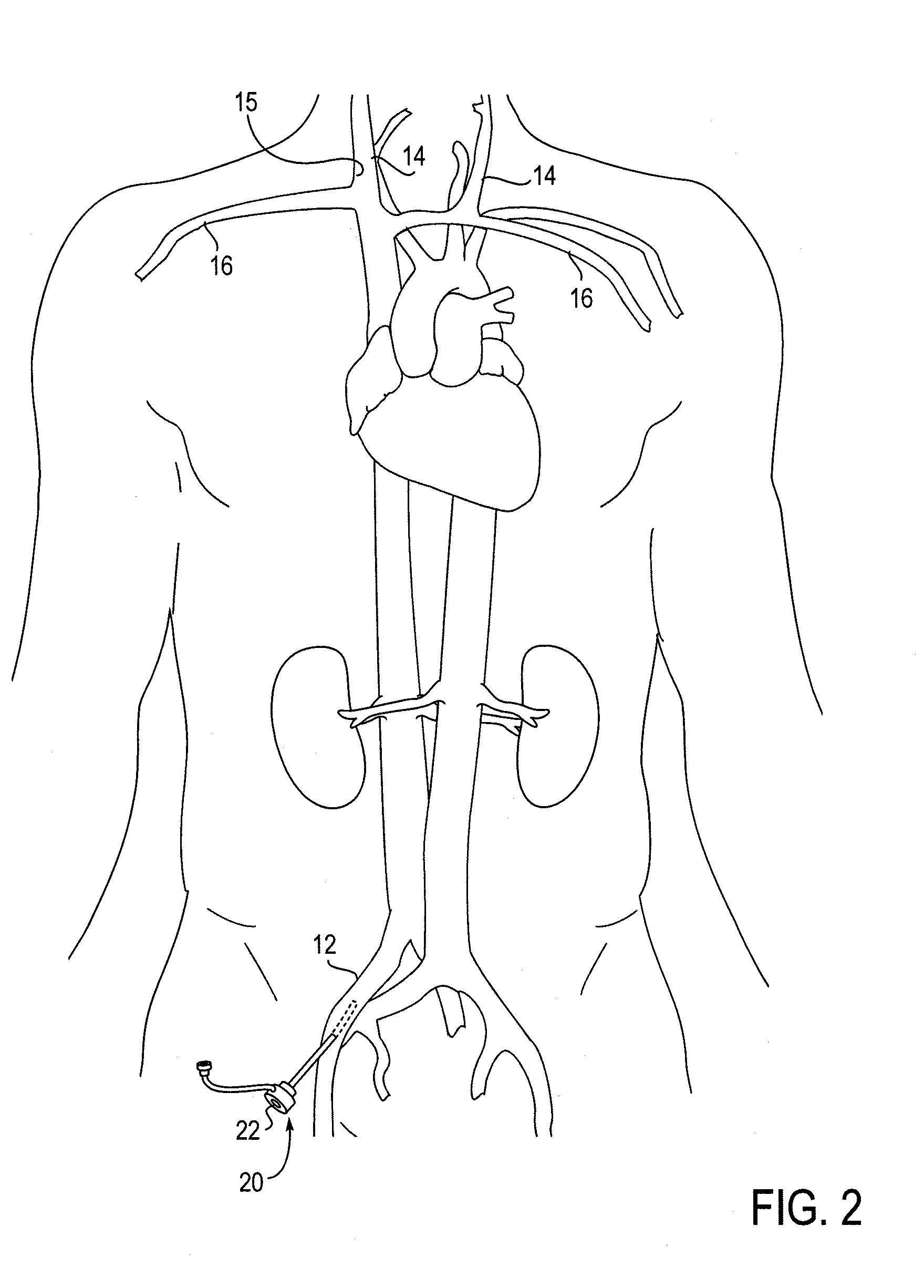Methods of Transvascular Retrograde Access Placement and Devices for Facilitating the Placement
a technology of retrograde access and transvascular vein, which is applied in the field of transvascular retrograde access placement and devices for facilitating the placement, can solve the problems of inability to visualize without, and inability to achieve the effect of facilitating the placemen
- Summary
- Abstract
- Description
- Claims
- Application Information
AI Technical Summary
Benefits of technology
Problems solved by technology
Method used
Image
Examples
Embodiment Construction
[0058]Embodiments of a method of the transvascular retrograde access placement, as provided herein, include the puncturing of a central blood vessel from the inside of the vessel with a penetrating device, such as a needle or other similarly configured device, and exiting that penetrating device from a patient through the skin. In some embodiments of the method, that penetrating device is supported at the distal end of a stiff intravascular guidewire; in other embodiments, the method may make use of an elongate needle which is then withdrawn prior to the passing a guidewire through the opening formed by the needle. By either approach, i.e., using an elongate needle or using a penetrating device at the distal end of a guidewire, the method involves passing outward through the skin, such passing originating from within the blood vessel. By such an inside-to-outside approach, the ability of a surgeon to precisely determine the location of a pass-through site in the vascular wall is sub...
PUM
 Login to View More
Login to View More Abstract
Description
Claims
Application Information
 Login to View More
Login to View More - R&D
- Intellectual Property
- Life Sciences
- Materials
- Tech Scout
- Unparalleled Data Quality
- Higher Quality Content
- 60% Fewer Hallucinations
Browse by: Latest US Patents, China's latest patents, Technical Efficacy Thesaurus, Application Domain, Technology Topic, Popular Technical Reports.
© 2025 PatSnap. All rights reserved.Legal|Privacy policy|Modern Slavery Act Transparency Statement|Sitemap|About US| Contact US: help@patsnap.com



